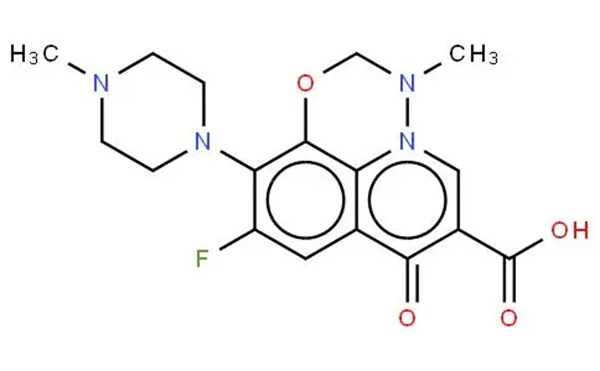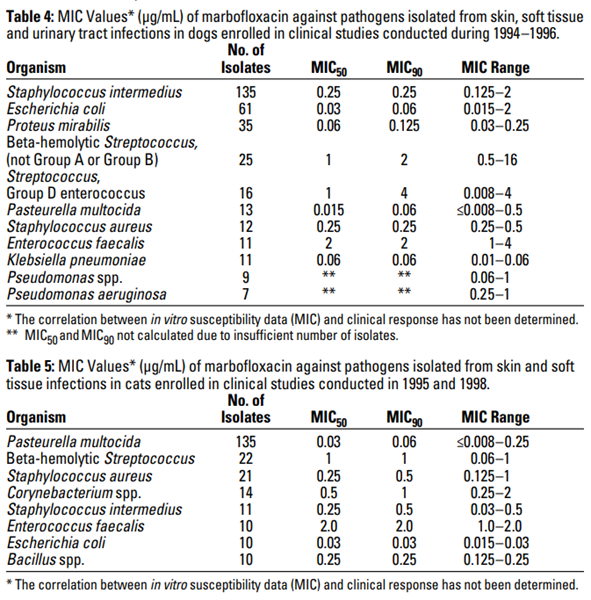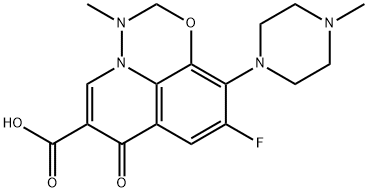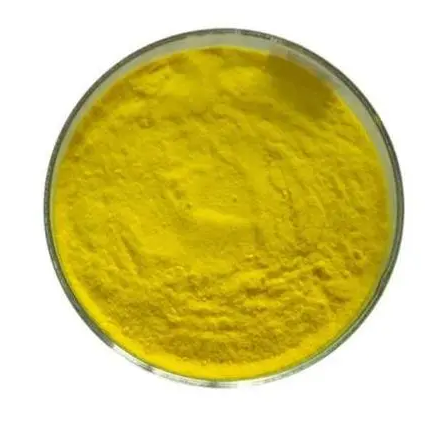Veterinary drug Marbofloxacin: Uses, Mechanism of action, Adverse reactions and Toxicity
Uses of Marbofloxacin
Marbofloxacin is the non-proprietary designation for 9-fluoro-2,3-dihydro-3-methyl-10-(4-methyl-1-piperazinyl)-7-oxo-7Hpyrido[3,2,1-ij][4,1,2] benzoxadiazine-6-carboxylic acid. The empirical formula is C17H19FN4O4 and the molecular weight is 362.36. The compound is soluble in water; however, solubility decreases in alkaline conditions. The N-octanol/water partition coefficient (Kow) is 0.835 measured at pH 7 and 25°C. Chemical structure of marbofloxacin:

Marbofloxacin is a synthetic fluoroquinolone veterinary-specific antimicrobial drug with broad-spectrum antibacterial activity against both Gram-negative and Gram-positive bacteria. It is approved for use in dogs and cats for the treatment of a wide range of bacterial infections, particularly in the bladder, kidneys, prostate or skin.
Mechanism of action
The mechanism of action of Marbofloxacin is to disrupt DNA formation in susceptible bacteria during replication, thereby preventing bacterial growth and reproduction. In susceptible organisms, fluoroquinolones are rapidly bactericidal at relatively low concentrations.Marbofloxacin is bactericidal against a wide range of Gram-negative and Gram-positive bacteria. The minimum inhibitory concentrations (MICs) for pathogens isolated in clinical field studies conducted in the United States are shown below:

Adverse reactions of Marbofloxacin
Common side effects of Marbofloxacin include vomiting, diarrhoea, loss of appetite, lethargy, dehydration, and rash; in rare cases, serious side effects may occur such as behavioural changes, tremors, blindness, and depression. The most common symptoms of overdose are vomiting and diarrhoea. Signs of a larger or more prolonged overdose include loss of appetite, dehydration, drowsiness, tremors, facial swelling, skin/ear redness, drooling, and blindness.Marbofloxacin and other fluoroquinolone antibiotics can cause abnormal cartilage development in growing animals.
Toxicity of Marbofloxacin
Dogs: Marbofloxacin administered to 3- to 4-month-old, large breed, purpose-bred mongrel dogs at a dosage of 5 mg/lb/day for 14 days resulted in marked lameness in all dogs due to articular cartilage lesions. Lameness was accompanied by decreased appetite and activity.
Marbofloxacin was administered to 12- to 14-month-old beagle dogs at a dosage of 25 mg/lb/day for 12 days. Decreased food consumption, vomiting, dehydration, excessive salivation, tremors, reddened skin, facial swelling, decreased activity and weight loss were seen in treated dogs. No clinical lameness was noted. As in the 42 day study, grossly visible, focal, red areas of articular cartilage were seen. These findings were noted in 2/6 placebotreated dogs and in 4/6 marbofloxacin-treated dogs. The foci were areas of fibrocartilage. with prominent vascularization or increased vascularization of subchondral bone. Due to the appearance microscopically and macroscopically, these red foci were described as likely to be developmental anomalies or normal variations in articular cartilage.
Cats: Marbofloxacin was administered orally to 6 cats approximately 8 months of age for 14 consecutive days at a dosage of 25 mg/lb/day (55 mg/kg/day). Clinical signs associated with drug intolerance were excessive salivation in 5/6 cats and redness of ear pinnae in all cats after 8 days of treatment. Emesis was noted occasionally in several cats and diminished activity was noted in one cat. Decreased food intake was noted in some animals, primarily males, when compared to controls. Perivascular to diffuse dermatitis was seen microscopically in the pinnae of all treated animals and in the standard skin samples of several animals. There was focal or multifocal articular chondropathy in 2/6 treated animals. One treated cat had a duodenal mucosal erosion and one treated cat had a pyloric ulcer. There were no observations of lameness and no adverse effects on hematology, clinical chemistry, urinalysis, or organ weight parameters. Funduscopic examination by a board-certified ophthalmologist and histologic examination of retina and optic nerve by ocular pathologists revealed no lesions.
A study was conducted to investigate the effect of marbofloxacin on articular cartilage of skeletally mature cats 12–14 months of age. Forty cats were randomly assigned to 4 groups of 10 cats each. Groups received placebo or marbofloxacin at dosages of 1.25, 3.75 or 7.5 mg/lb/day (2.75, 8.25 or 16.5 mg/kg/day) for 42 consecutive days. There were no treatment related pathological changes in the joints or other tissues. Emesis and soft stools was noted in all treatment groups, including placebo, and increased in frequency with increasing dose and duration of treatment. Emesis was more apparent in the high-dose males.
A new calcium(II) complex of marbofloxacin
In this study, a new calcium(II)-based complex of marbofloxacin, MB-Ca, was synthesized and structurally characterized by IR, ESI-MS, UV–Vis and single crystal X-ray diffraction analysis. The characterization of this complex in solution state indicated that the coordinated MB-Ca was partly retained, along with the monomeric and dimeric forms of MB. It also showed satisfactory water solubility (1.89 mg/mL), comparing with MB (2.82 mg/mL) at 35 °C. The in vitro antibacterial activity of MB-Ca was also screened towards a series of typical pathogenic bacteria, and determined by the methods of turbidimetry and disc diffusion. The results indicated it showed comparable antibacterial activity to MB. However, it exhibited higher inhibitive ability in vitro on DNA gyrase than MB alone. Furthermore, MB-Ca showed significantly lower acute toxicity (LD50, 3186 mg/kg) than MB (LD50, 1294 mg/kg) in mice, based on the in vivo acute toxicity test. The histopathological examination on the major organs of the mice by the oral administration of MB-Ca did not show obvious organic lesions, which is similar to those treated by MB. The research results suggest that MB-Ca could be further developed into a new promising metal-based veterinary drug and a better substitute of MB, showing unabated antibacterial activity along with lower toxicity.
References
[1] YAN-JIE XIE . A new calcium(II) complex of marbofloxacin showing much lower acute toxicity with retained antibacterial activity[J]. Journal of Inorganic Biochemistry, 2020. DOI:10.1016/j.jinorgbio.2019.110905.
You may like
See also
Lastest Price from Marbofloxacin manufacturers

US $5.00-0.50/KG2025-06-13
- CAS:
- 115550-35-1
- Min. Order:
- 0.10000000149011612KG
- Purity:
- 99% hplc
- Supply Ability:
- 5000kg

US $1.00/KG2025-04-21
- CAS:
- 115550-35-1
- Min. Order:
- 1KG
- Purity:
- 99.0% ~ 101.0%
- Supply Ability:
- 50KG/month


